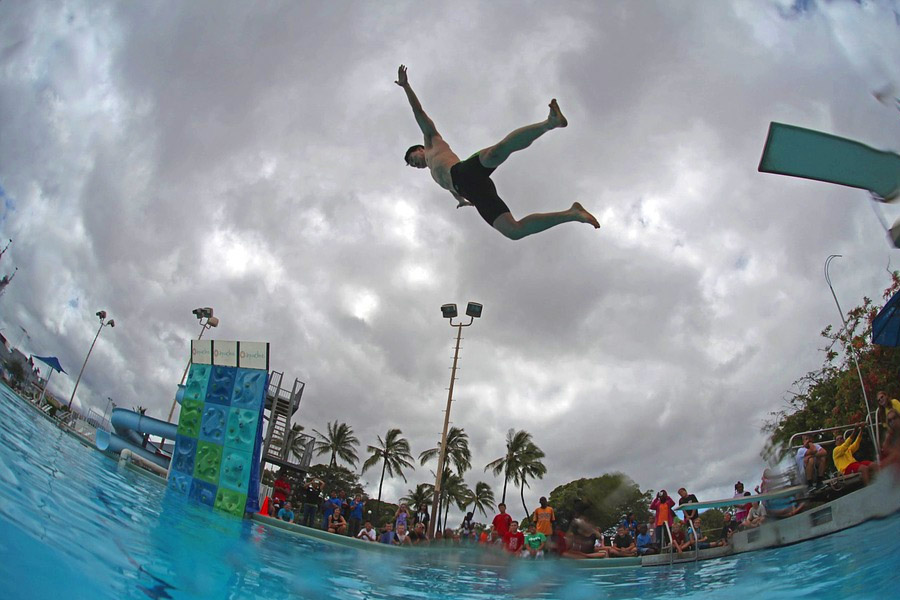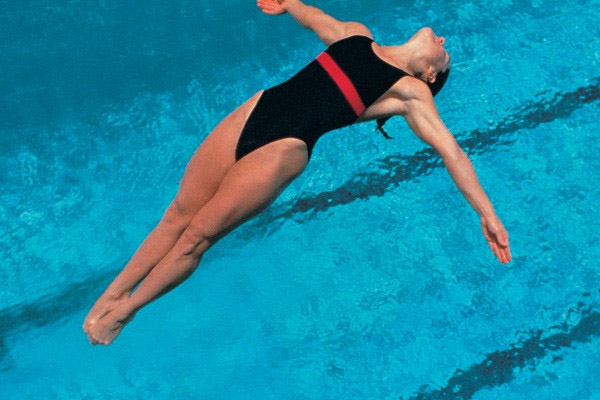You could be easily forgiven if you think a dive is just a dive, but actually there are a great many different dives that can be executed, each one having distinctive elements the others do not possess. For spectators often the dive is over so quickly that it is hard to see what happened before the diver entered the water. Once you have a basic understanding of the different types of swimming dives it will make watching professionals so much more enjoyable.
Dives come under six distinctive groups: backward, forward, reverse, twisting, inward and arm stand. The backward, forward, reverse and inward groups of dives all involve some rotation of the body in relation to where the diver leaves the board and where they enter the water. The twisting group, as the name suggests, involve a twist. The arm stand group involves beginning the dive from a handstand position and do not use a springboard.
Now let’s take a closer look at each group individually to ascertain what makes them differ from other groups.

This group of dives begins with the diver standing on the edge of the board with his/her back to the water. While a somersault may be executed before entering the water, provided the diver starts facing away from the water it is considered a backward dive. When somersaulting, the diver rotates his/her body away from the board. It can be difficult to attain any significant height because a backward dive does not incorporate a short run up before springing off the board.
This group is the same as the backward only the diver stands on the edge of the board facing towards the water. Forward dives are also executed from a short run up before springing from the board. This group of dives is also the most well-known and most commonly performed .
Very similar to the forward group in that the dive is begun facing forward toward the water but unlike the forward group the diver rotates his/her body towards the board when executing the dive. This type of dive was once referred to as a “gainer”.
As with the backward dive the diver begins by standing on the edge of the board facing away from the water, and rotates his/her body towards the board when executing the dive. This type of dive was once referred to as a “cutaway”.
Within the twisting group of dives are the four types of dives listed above, but with a twist added into the execution. The twisting group does not include any dives begun from a handstand however. This group of dives is considered the most difficult to execute.
Any dive, if begun from a hand standing position, regardless of whether it is in a forward or backward facing position, and can include any twists, somersaults, or rotation. Skill and strength are required to maintain a steady position before leaving the board. These dives are only ever executed from a platform and never from a springboard, as steadiness before propelling off is crucial. The diver will place his/her palms face-down on the edge of the platform and perform a handstand before diving. Twists and somersaults can be executed on the way down from a hand standing position.
Synchronized diving is any one of the above types of dives undertaken by two divers at the same time. Before it became a recognized competitive sport synchronized diving was often just for show, to entertain the crowds. For all that, this form of diving takes great attention to timing in order to execute the same movements at exactly the same time. Each diver must be perfectly in tune with their partner and execute the exact same moves at exactly the same time so it appears that they are diving as one. There is no restriction on what type of dives a synchronized diving team can execute.



While dives fall into one of these 6 types, divers can choose to incorporate elements from any one of the other types to make their dive more unique. Which group the dive falls into depends largely upon the body position of the diver. There are five basic body positions: pike, tuck, straight, free or synchro.
Comments
Madlen Jones
3 days agoWe have tried all of them last friday, it was fun. Thanks. I recommend you to try too.
Drew Schneier
15 days agoI need someone to contact me concerning giving me some lessons and tips.